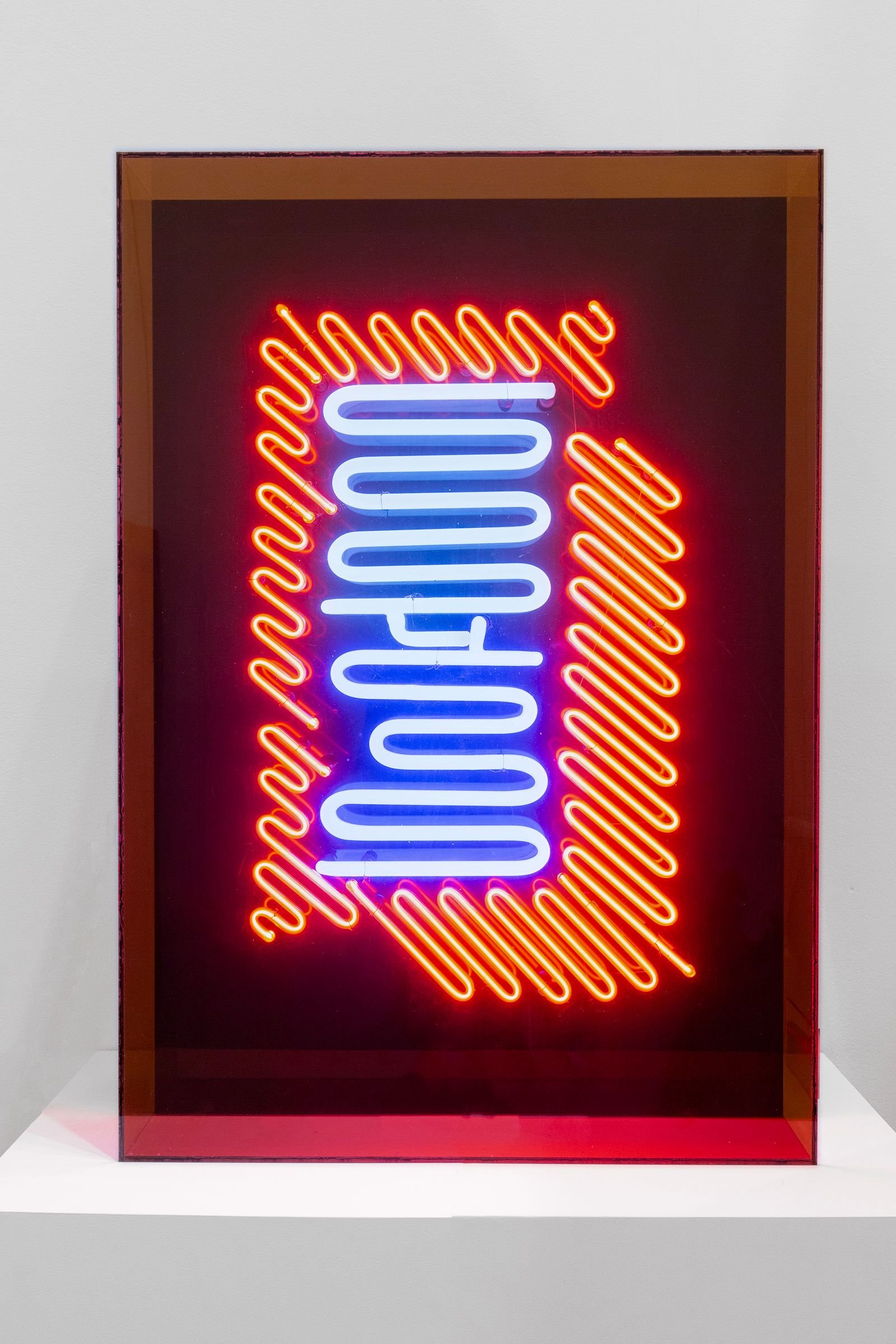Chryssa: Homeric Wisdom
29 November 2024 — 15 February 2025




We are pleased to present Homeric Wisdom, our second solo exhibition featuring works by Greek-American artist Chryssa (1933–2013). Renowned for her ability to bridge art, industrial processes, urban environments, and mass communication, Chryssa’s work stands as a powerful testament to the early beginnings of Minimalism and Pop Art. As a pioneer in light art, she drew inspiration from the vibrant energy of 1950s New York, particularly the neon signs of Times Square and the dynamic interplay of typography in advertising.
Homeric Wisdom will feature significant and historical works from every phase of Chryssa's career. Highlights include iconic neon pieces from the 1960s that reflect her mastery of industrial materials and light, alongside early Cycladic Books and works with newspaper images featuring stamped advertisements and stock exchange charts.
A prominent artist in her own time—represented by Betty Parsons, Denise René, Pace, and later Leo Castelli—Chryssa was almost invariably at the forefront of post-war art, often predicting or pushing the limits of Pop, Minimalism, Conceptualism, and light art. The artist’s biography is equally captivating: an immigrant to the United States from Greece and an openly queer woman long before Stonewall, Chryssa lived in New York City for nearly half her life, drawing inspiration notably from the neon signage of Times Square, the logographs of Chinatown, and her artistic milieu around the Coenties Slip. With major solo exhibitions at institutions like the Guggenheim and MoMA, her influence is evident in the works of contemporaries such as Andy Warhol and Agnes Martin.
“Best known for her luminist sculptures in brilliantly colored neon tubing, the Greek-born sculptor Chryssa is one of the outstanding artists working in America today. […] Soon after her arrival in America, Chryssa found her inspiration in Times Square, and often in the newspaper for which the Square is named. Her early "Newspaper"' paintings and sculptures were innovative experiments using typography, newsprint collages, metal moulds, and alphabetical forms in raised relief.
Chryssa related the dazzling neon signs of Times Square to the art of Byzantium: "In Times Square, the sky is like the gold of Byzantine mosaics or icons." Eventually these signs were transformed by the artist into her own mysterious symbols and alphabetical elements expressing what was for her the "Homeric wisdom" of the signs.”
–Pierre Restany in: Restany, Chryssa, New York, 1977, inside cover

Chryssa Untitled (Diptych, Grey newspaper stock exchange stamps "Industrials"), 1960s Oil and watercolour on canvas 53,5 x 51,5 cm each

Chryssa Untitled, 1973 Neon light, plexiglass 98 x 68 x 25.5 cm

Chryssa Blue "Hamburger Heaven/Ice Cream Parlour" (BUR), 2009 - 2010 Painted aluminium, neon tube 118 x 92 x 40 cm

Chryssa Red "Hamburger Heaven/Ice Cream Parlour" (PA), 2009 - 2010 Painted aluminium, neon tube 93 x 90 x 31 cm

Chryssa Jazz, late 1960s Neon light, plexiglas 70 x 51 x 31 cm

Chryssa "Florida $89", 1959 Oil with stamp prints on paper 56 x 56 cm